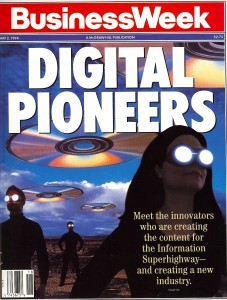Way back in ancient times, a decade ago, I wrote a piece for Salon that mentioned the widely circulated anecdote about President George H.W. Bush (the elder) casting a wondering gaze at a supermarket scanner. The tale had legs during the 1992 election cycle because it echoed a sense in the electorate that Bush was out of touch with the common people who were then suffering through a miserable recession.
I believe Bush was indeed out of touch. But my reference to the tale evoked several outraged emails from readers who accused me of perpetrating an urban myth. Bush had been treated unfairly by this news meme (Snopes.com has the details), and I had repeated the injustice.
I learned a couple lessons from the experience. One was to redouble my efforts as a journalist to question received wisdom. The other, more important lesson was that the knowledge my readers were going to send (and sometimes hurl) my way was invaluable. (Or, in Dan Gillmor’s famous phrase: “My readers know more than I do.”)
I thought of all this recently as I encountered the latest transmutation of the Bush/scanner meme. Yesterday The Huffington Post picked up a report on a law blog that made out Chief Justice Roberts to be a technological naif who had to ask, in the middle of an argument, “what’s the difference between email and a pager?”
I read the original blog post. Then I read the comments. Then I read the link to the original transcript of the argument that a commenter had helpfully provided. And I concluded for myself (you might feel otherwise, but I doubt it) that — however much Roberts may be more radical a conservative than I would wish — he’s not an idiot, and he had a reasonable basis to ask the question.
The self-correcting online feedback loop works a lot faster today than it did 10 years ago, and a lot more openly (we didn’t have comments on Salon back then). The “Roberts doesn’t know what a pager is” meme ought, by rights, to have been stopped in its tracks. It will be very interesting to follow its course in coming weeks and months. Past experience suggests that, despite having been arrested early on on the web, it will now be amplified on cable and in print and have a long half-life in our collective psyche.




 This sweatshop approach to content creation is, of course, anathema to old-fashioned writers and editors. It raises all sorts of disturbing questions about the advertising cart leading the editorial horse (as
This sweatshop approach to content creation is, of course, anathema to old-fashioned writers and editors. It raises all sorts of disturbing questions about the advertising cart leading the editorial horse (as